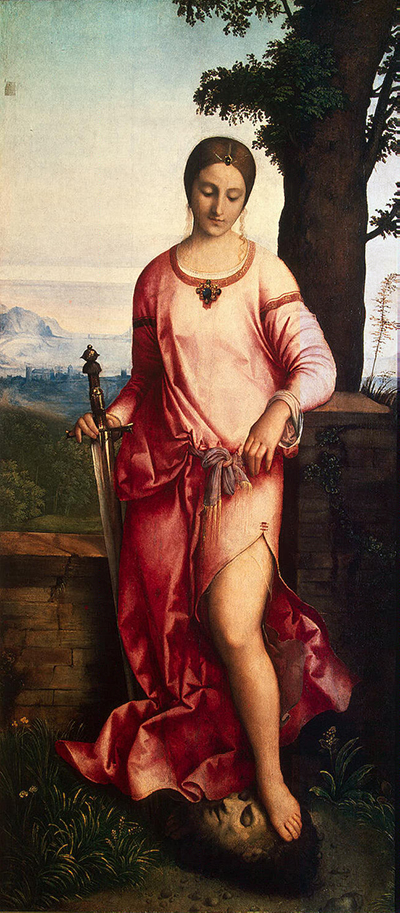Perhaps the earliest feminist revenge tale, the fable of Judith and Holofernes is an age old one.
The story is simply told: Holofernes, an Assyrian general had besieged the city of Bethulia, a Jewish stronghold, and was on the point of forcing them into surrender. Judith, a beautiful Jewish widow, overheard the men talking of surrender, and decided to take matters into her own hands. She boldly entered Holofernes tent, unchecked by any guards because she was merely a beautiful woman, and played a seductive waiting game with him as he became more and more drunk and heedless. At this point, she overpowered him and cut his head off, leaving the tent and taking the head to show her menfolk, to prove that their thoughts of surrender were both premature and unnecessary.
As with any tale of blood-thirsty (but justified) revenge, especially when undertaken by the perceived underdog, this story captured the imagination of many artists, most of whom recreated the scene after the beheading, with their beautiful women cradling, dangling or – as in this case – crushing, the head underfoot, the wickedly sharp blade used still in her hand. These artists included Caravaggio, Cranach, Goya, Botticelli, Artemisia Gentileschi, even modern artists like Klimt and Von Stuck – a veritable who's who of the art world – but none quite captured so peaceful and tranquil a Judith as Giorgione did.
His Judith – this Judith – is calm, clearly suffering neither guilt nor regret about her actions. Her sword, unbloodied as far as the viewer can see, is tucked behind her, with just the hilt and the first few inches of the blade visible. Her hand is resting casually on the hilt – clearly the danger has passed and she is feeling safe, save for, perhaps, a mild curiosity towards the grisly relic at her feet. Judith's hair is beautifully done, pinned in place apart from two gentle curls that spill towards her shoulders, giving her a delightfully sweet and feminine air that is only aided by the gentle pale pink of her gown, flowing to floor length apart from the thigh high split – a nod to both her feminine demureness and her feminist lethality.
The painting is one of the very few to be clearly and unmistakeably designated a Giorgione, and passed into the hands of the Russian Heritage Museum in 1772 from Paris where it had been briefly misattributed to Raphael. The painting was filthy, distorted and made ugly with a thick, disfiguring layer of yellowed varnish. In 1839, the painting, originally oil on panel, was transferred painstakingly to the canvas upon which it now resides, and in 1967 it was decided that the attempt must be made to clean the work. With only two to six square centimetres of the painting being worked on each day, the whole process took four years to complete: but it was worth it. The colours glow out of the frame and Judith stands, poised in eternal triumph over the head of her people's slain enemy.




